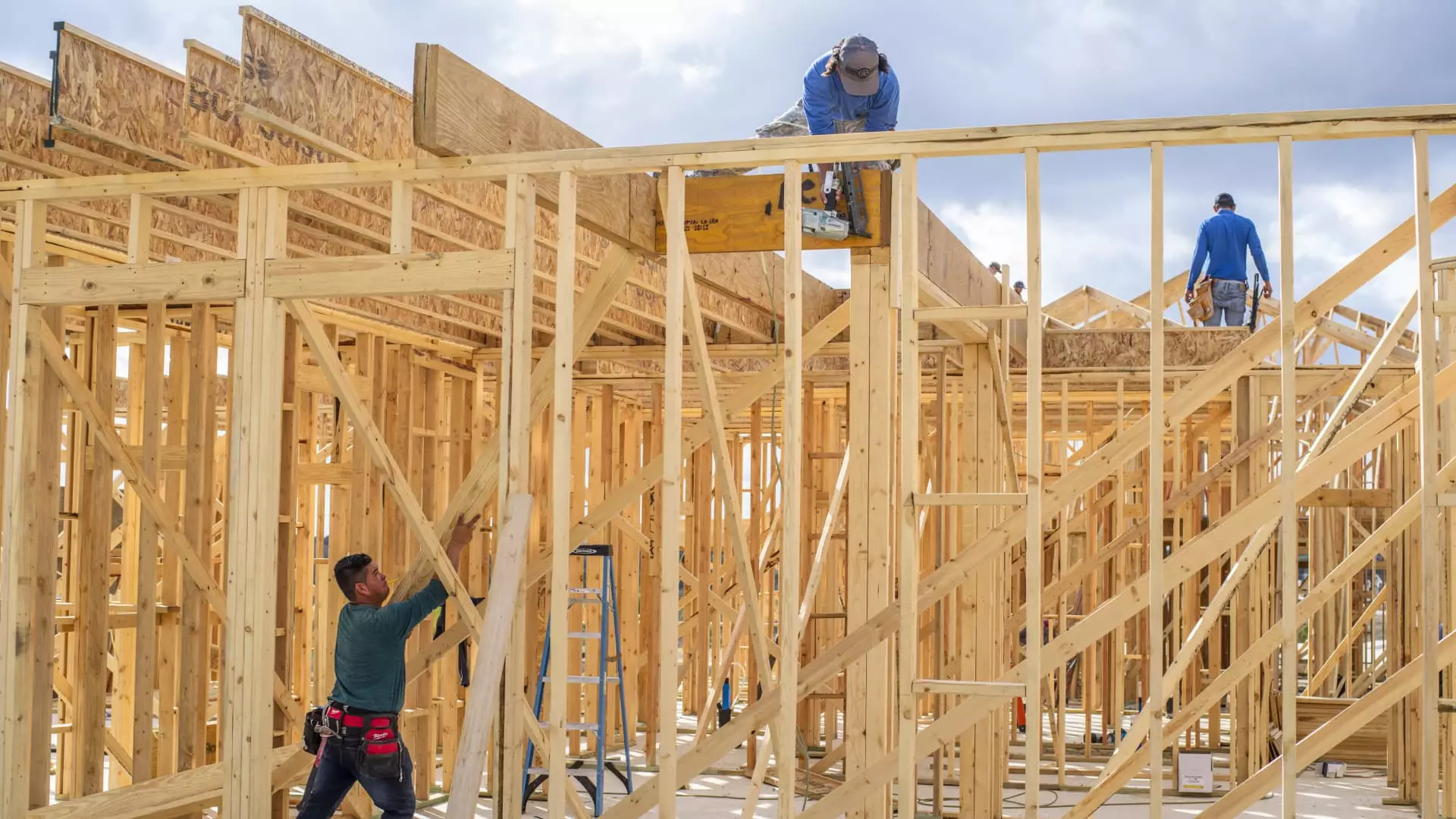The landscape of the single-family housing market has shifted dramatically, as evidenced by a recent downturn in sentiment among homebuilders. In February, the National Association of Home Builders (NAHB) released its Housing Market Index (HMI), revealing a concerning decline of five points, bringing the index down to 42. This figure, which is alarmingly below the neutral benchmark of 50, reflects a growing apprehension about the state of the market. Particularly alarming is the evident effect of rising costs due to tariffs, which are looming over homebuilding enterprises and exacerbating existing challenges.
The primary culprit behind this declining sentiment is the uncertainty surrounding tariffs. Industry experts point to the expected rise in material costs, particularly for appliances and softwood lumber, with a considerable percentage of these materials sourced internationally. The concern is not unfounded; the trade dynamics are particularly complex, pushing builders to reevaluate their cost structures and pricing strategies. Carl Harris, chairman of the NAHB, noted the hope for pro-development policies but the present economic landscape presents a notable lack of certainty. This unpredictability can cripple the ability of homebuilders to make informed decisions regarding future projects, leading to a more conservative approach to new developments.
The HMI also highlighted declines in three key components: existing sales conditions, buyer traffic, and sales expectations for the forthcoming months. The declines in these metrics suggest that not only are builders feeling pessimistic, but they are also observing tangible evidence of slowing buyer interest. With buyer traffic falling to 29, it’s evident that prospective homeowners are increasingly hesitant, a trend that will likely be mirrored in the broader market dynamics.
A significant element contributing to this environment is the escalating mortgage rates. The average 30-year fixed mortgage rate has surged above 7%, a stark departure from the more favorable 6% range witnessed in earlier months. This steep rise in borrowing costs has weakened the purchasing power of potential homebuyers, resulting in a chilling effect on demand. Even as builders express optimism concerning regulatory reform and possible market recovery, the immediate impact of higher mortgage rates has effectively put the brakes on buyer enthusiasm.
Ryan Marshall, CEO of PulteGroup, elaborated on the challenges presented by these elevated rates in recent earnings reports. While the federal government’s efforts to lower short-term interest rates should theoretically improve buyer sentiment, in practice, the effect of persistent high mortgage rates has cast a long shadow over the market. Affordability remains a substantial hurdle, as prices have not only held firm but in many cases have increased compared to a year ago, compounding the difficulty for prospective buyers.
In light of these pressures, builders are grappling with the realities of declining buyer interest and the implications for pricing strategies. Interestingly, the proportion of builders resorting to price reductions has diminished, falling to 26% from a higher figure of 30% in January. As sales incentives decrease in frequency and effectiveness, it raises questions about the true drivers of buyer behavior in this competitive market.
The crux of the issue lies in the fact that when buyers become effectively priced out of the market, no amount of incentives can revive their interest. The diminishing pool of potential buyers signals a market shift that could have lasting impacts. Builders may find that with fewer marginal buyers in the market, their strategy must evolve, focusing on the long-term sustainability of their developments rather than short-term sales tactics.
The current state of sentiment among single-family homebuilders underscores the intricate challenges faced by the industry. With tariffs looming, mortgage rates rising, and buyer interest waning, the path forward may require a strategic re-assessment of business practices, pricing structures, and government relations. As builders navigate this tumultuous landscape, they must remain adaptable and proactive to leverage any forthcoming opportunities while mitigating risks amidst economic uncertainty. The observations of February’s HMI offer a sobering reminder that the environment for homebuilders is increasingly complex and warrants vigilant attention moving forward.

